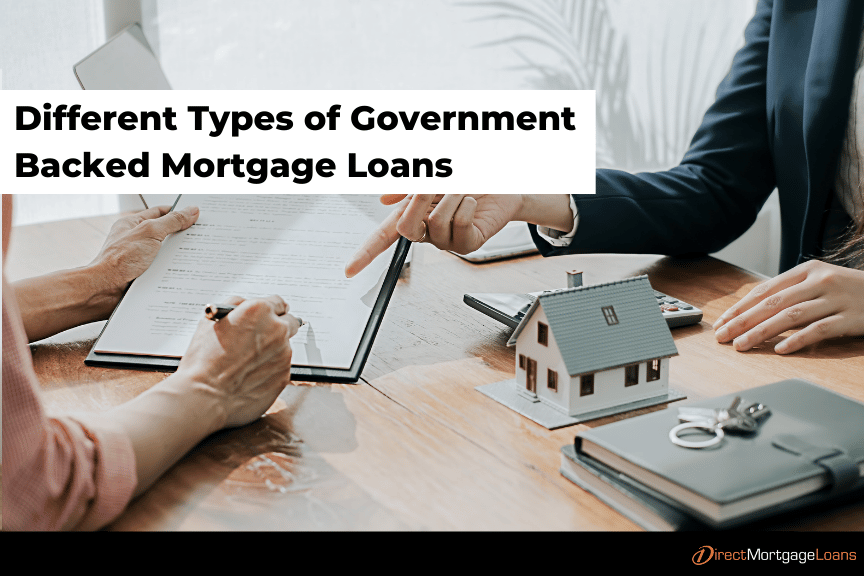Conventional Mortgage Loans: Flexible Financing Solutions for Your Fantasize Home
Conventional Mortgage Loans: Flexible Financing Solutions for Your Fantasize Home
Blog Article
The Essential Factors to Think About When Choosing In Between Fixed-Rate and Variable-rate Mortgage Fundings
When reviewing home mortgage alternatives, consumers face an essential choice in between adjustable-rate and fixed-rate loans, each offering distinct benefits and possible challenges. Secret factors to consider such as interest rate stability, predictability in regular monthly repayments, and the implications of potential rate adjustments can significantly impact long-lasting financial wellness.
Rate Of Interest Price Stability
When picking a home loan, comprehending passion price stability is critical for notified decision-making. Interest prices can substantially influence the general expense of a mortgage, and acknowledging the nature of these rates is necessary for debtors.
On the other hand, adjustable-rate home mortgages (ARMs) start with reduced first rates that may transform regularly based on market conditions. While this can result in reduced settlements originally, it also introduces unpredictability, as customers might face enhanced repayments if rates of interest increase. For those considering an ARM, it is vital to evaluate the likelihood of price modifications, the capacity for payment boosts, and the length of the preliminary fixed-rate duration.
Ultimately, the selection in between fixed-rate and adjustable-rate home loans pivots on specific risk tolerance and economic circumstances. Understanding rate of interest security aids consumers make educated decisions that line up with their lasting economic objectives.
Regular Monthly Repayment Predictability
While debtors typically focus on rates of interest security, the predictability of regular monthly settlements is similarly important in the mortgage option procedure (Conventional mortgage loans). Monthly repayment predictability plays an essential function in budgeting and monetary preparation, as it straight affects a house owner's cash circulation and general economic health and wellness
Fixed-rate home mortgages use a consistent regular monthly payment throughout the life of the loan, enabling consumers to prepare for and intend their costs successfully. This security can be especially advantageous for novice property buyers or those on a fixed revenue, as it eliminates the uncertainty connected with rising and fall repayments.
On the other hand, variable-rate mortgages (ARMs) commonly include reduced preliminary repayments that can alter over time, bring about prospective irregularity in monthly obligations. While at first enticing, this changability can make complex economic preparation, especially if customers do not account for future rate adjustments.
Potential Price Modifications
In the realm of adjustable-rate mortgages (ARMs), potential price modifications stand for a substantial element that consumers need to thoroughly think about. Unlike fixed-rate mortgages, where the rate of interest remains unmodified for the life of the loan, ARMs are identified by changing rate of interest that are tied to market indices. This irregularity can result in considerable modifications in month-to-month repayments, impacting the consumer's economic preparation and budgeting.
Normally, ARMs have a first fixed-rate period during which the rate of interest price is secure. After this duration, nonetheless, the price changes at established periods-- typically annually. Debtors should know the margin and index utilized to calculate these modifications, as they straight influence future rate of interest. In addition, ARMs typically include caps that restrict just how much the rates of interest can enhance at each change and over the click over here now life of the funding, which can supply some degree of security versus drastic price hikes.
Understanding these potential modifications is essential for borrowers, as they straight influence long-term payment obligations. Evaluating personal economic scenarios and risk tolerance is crucial when choosing whether an ARM straightens with one's financial objectives.
Lending Term Considerations
Funding term factors to consider play a pivotal function in the decision-making procedure for borrowers selecting in between fixed-rate and adjustable-rate mortgages. The length of the financing term substantially affects month-to-month settlements, passion rates, and general economic planning.

Ultimately, debtors need to examine their personal situations, financial goals, and market problems when evaluating the ramifications of loan term choices within each home mortgage type.

General Expense of Borrowing
Fixed-rate mortgages use foreseeable monthly repayments, as the passion price remains constant throughout the financing term. This predictability can lead to lower general expenses, specifically in a secure or declining interest rate atmosphere.
Alternatively, adjustable-rate mortgages (ARMs) normally begin with lower initial rates, leading to minimized upfront prices. However, these prices can increase after an initial period, bring about potentially greater lasting prices. Consumers must take into consideration the regularity and extent of price adjustments, as well as you can try this out the general funding period, to precisely analyze the monetary effects.
Furthermore, the total expense of borrowing incorporates not only rates of interest yet additionally charges and other associated expenses, such as closing costs and insurance policy (Conventional mortgage loans). When examining mortgage options, consumers should carry out a complete expense analysis over the life of the finance. By doing so, they can make an educated decision that aligns with their financial goals and run the risk of resistance
Verdict
Interest price security and month-to-month settlement predictability are critical for effective budgeting, while the potential for price adjustments in ARMs presents monetary uncertainty. In addition, the anticipated period of homeownership and the overall price of borrowing, including interest rates and connected fees, must align with specific economic conditions and run the risk of tolerance.
Trick factors to consider such as passion rate stability, predictability in monthly settlements, and the effects of prospective price changes can considerably impact long-term financial wellness. Rate of interest rates can significantly influence the general expense of a home mortgage, and acknowledging the nature of these rates is essential for debtors. Unlike fixed-rate home loans, where the rate of interest price remains unmodified for the life of the car loan, ARMs are identified by fluctuating passion prices that are connected to market indices. In addition, ARMs frequently consist of caps that restrict just how a lot the passion price can raise at each change and over the life of the financing, which can give important site some level of defense versus extreme price hikes.
Interest price security and monthly payment predictability are paramount for reliable budgeting, while the potential for rate modifications in ARMs presents economic uncertainty.
Report this page